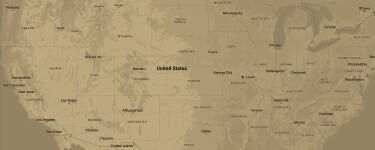The Wrights enjoyed a sumptuous Thanksgiving dinner and kicked off a raucous board game in the den after the meal. An hour later, screeching smoke detectors punctured the celebratory atmosphere. A candle had fallen. The walnut dining table was burning briskly, sending black smoke rolling across the ceiling.
“The Wrights grabbed a fire extinguisher and doused the flames quickly,” says Bob Hillier, Owner of Paul Davis Restoration of Greater Houston, Texas. “But smoke spread quickly even after the blaze was out. Soot and odor treatments rehabbed the entire first floor and the dining room got a new ceiling and table.”
Thanksgiving Day is the biggest day for home fires in the United States, but fires remain a notable risk throughout the holidays. Reduce risks by following a few important do’s and don’ts for three common celebratory activities that top the hazard list:
Christmas trees and decorations
DO:
- Choose LED lights, which stay cool and conserve energy.
- Keep live trees well-watered. If choosing an artificial tree, select a model certified by Underwriters Laboratories (UL-certified).
- Unplug holiday lights when leaving the room.
DON’T:
- Overload extension cords.
- Connect too many light strings together. Follow manufacturers’ directions to avoid overheating lighting.
- Place live trees close to flammable materials.
Candles
DO:
- Keep candles at least one foot away from flammable materials. Three out of five candle fires ignite when a flammable material is too close to the flame.
- Keep loose clothing away from candle flames.
- Choose battery-operated, flameless candles. Many newer options look and smell like the real thing.
DON’T:
- Leave a burning candle unattended. Put it out even if you leave the room briefly. And don’t fall asleep with a candle lit.
- Let candles burn all the way down.
- Burn candles if oxygen is in use by someone in the home.
Cooking:
DO:
- Move flammable items away from cooking areas and hot surfaces.
- Keep a fire extinguisher easily accessible in the kitchen. Ensure the model is current and maintained regularly.
- Keep cooking appliances clean and in good repair.
DON’T:
- Leave cooking items unattended. Avoid distractions during cooking.
- Overheat fat or grease, which can burst into flame suddenly.
- Allow children or pets in the cooking area.
Paul Davis endorses one more “DO” that boosts fire safety year-round: functional smoke alarms, preferably hard-wired with battery back-up. “And resist the urge to disconnect smoke alarms that alert unexpectedly,” Hillier says. “That annoying alarm – which is more sensitive to smoke molecules than you are – could be trying to save your life.”











